

Agridisk
Egypt - Alexandria
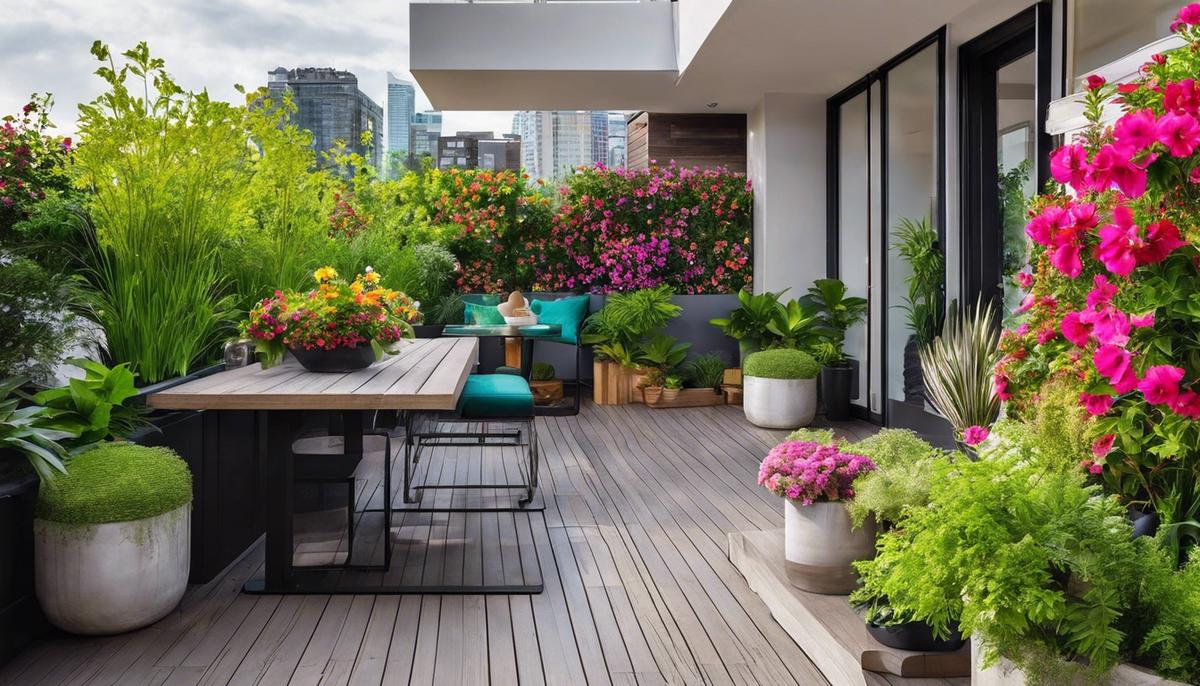
Urban gardening | Meaning, Benefits & Ideas
Description: Amidst the concrete jungle of city life, an emerging oasis of greenery is taking root in the most unexpected of places. Urban gardening is revolutionizing the way we think about our living spaces, turning underutilized urban areas into vibrant hubs of growth and sustainability. From the private sanctuary of a balcony garden to the shared harvest of a community plot, this phenomenon is more than a hobby—it’s a movement. With a variety of techniques at our fingertips, including container and vertical gardening, city residents are empowered to cultivate lush environments that invite nature back into the metropolitan landscape. This introductory exploration will take you on a journey through the transformative power of urban gardening, shedding light on its significance and the incredible benefits that come with bringing a slice of the countryside into the city. At the heart of bustling city life, nestled between high rises and concrete sidewalks, lies an oasis of greenery that's reshaping the urban landscape—welcome to the world of urban gardening! Urban gardening is an ingenious way to transform small and often underutilized spaces into vibrant patches of life. It encompasses growing plants, herbs, veggies, and flowers within city confines—be it on rooftops, balconies, tiny backyards, or even repurposed lots. It's about making inventive use of limited space and resources to create an ecological haven amid urban sprawl. So, how does one delve into this verdant venture? Let’s dig in! First off, urban gardening is about making the most of your space. Whether you're arranging planters on a sunny balcony or cultivating a community garden plot, the guiding principle is thoughtful maximization. Vertical gardens are transformative, letting climbers and wall-mounted planters ascend towards the sky, offering lushness without sacrificing square footage. Then, there's the choice of plants. Urban gardening often means getting creative with what you grow. It might be about picking dwarf varieties of favorite veggies, indulging in a variety of potted herbs that flavor up your home cooking, or selecting pollution-tolerant foliage that thrives in city conditions. Native species are always a smart choice, as they boost local ecology. Light is gold in the city garden. It defines not just where you can grow, but what—so it’s crucial to understand the sunlight your space receives. South-facing spots are coveted for their hours of exposure, while the East or West can provide that gentle morning or evening sun. No sunny spots? No problem! Shade-loving plants are there to fill the void. Next up, soil health is paramount. Since space isn’t abundant, ensuring the soil is nutrient-rich is vital. Composting is a fantastic way to recycle kitchen scraps into gold for your plants. It’s a win-win—reducing waste while stimulating robust plant growth. Watering is another key element to ponder. With space constraints, urban gardeners get inventive with water collection and conservation. Small-scale drip irrigation systems or self-watering containers can be marvels for efficiency, ensuring plants get the H2O they need without overuse. Community is often at the root of urban gardening. It's about joining forces with like-minded green thumbs to share knowledge, seeds, and harvests. Community gardens create a shared space where people can come together, learn from each other, and foster a connection to nature. Don't let the concrete jungle intimidate you. Urban gardening is playful experimentation. It’s about growing fresh food steps from the kitchen or creating a tranquility spot amidst the urban din. It’s about green living, sustainability, and, most importantly, joy. It's proof that no matter how dense our cities become, there will always be a nook waiting to blossom into a lush escape for everyone to enjoy. Gardening aficionados know the profound satisfaction that comes with nurturing a plant from seed to bloom or harvest. But even beyond personal fulfillment, urban gardening stands as a beacon of sustainability in the bustle of city life. So, why should one roll up their sleeves and dig into the world of urban gardening? Firstly, urban gardening is an ambassador of biodiversity. Amidst the steel and glass monoliths of the city, these green spaces invite an array of insects, birds, and other wildlife, akin to a verdant oasis in a desert of urban development. By choosing a variety of plants, urban gardens foster a mini-ecosystem, which can help maintain the delicate balance of urban wildlife. Next on the docket is the silent gift of air purification. Plants are nature's lungs, absorbing carbon dioxide and other pollutants, only to gift us with fresh oxygen. In areas clouded with smog and exhaust, an urban garden is like a breath of fresh air—literally—filtering out the unseen undesirables that often accompany city living. In the broader scope, urban gardens are teaching tools unparalleled by textbooks. They serve as living classrooms for all ages to learn about plants, sustainability, and the environment. In the face of climate change, understanding these concepts is not just useful, but necessary. Through hands-on experiences, a city dweller can learn about the life cycle of plants, the importance of ecosystems, and the impact of humans on the environment. Mental health is yet another gem in the crown of urban gardening. Studies have shown that gardening activities can reduce stress, alleviate anxiety, and promote a general sense of well-being. In the never-sleeping cities, these gardens are tranquil nooks for meditation and restorative reflection, a respite from the 24/7 grind that can wear down even the sturdiest of urbanites. Let’s not overlook the aspect of self-reliance. With space at a premium, it's empowering to cultivate a patch of independence. Even a modest collection of herbs on a windowsill or a tomato plant on a balcony allows urban gardeners to grow a portion of the food they consume. This can lead to healthier eating habits, not just by having fresh produce but by fostering a deeper connection to the food on the plate. Additionally, urban gardens can be a catalyst for community building. They have the inherent magic to bring people together, forging friendships and camaraderie among neighbors who might otherwise never have crossed paths. These shared green spaces can become hubs of social interaction, cultural exchange, and collective learning, knitting together the fabric of an urban community. Finally, urban gardens are bastions against the mundane. They provide a creative outlet where one can express themselves through the design and care of their mini horticultural artwork. From the color palettes of blooming flowers to the sculptural forms of various shrubs, an urban garden allows for artistic expression on a canvas unlike any other. In a world that's growing ever more urban, it's these pockets of cultivated nature that remind us of our roots. While cities continue to expand skyward and outward, urban gardens ground us, bringing us back to the earth and closer to each other. They’re not just about growing plants; they’re about growing communities, fostering education, and nurturing well-being, one seedling at a time. Would-be gardeners, the city beckons – grab a trowel, and let's grow together. Tackling Pest Management in Concrete Edens In the vast expanse of the urban jungle, each leafy terrace and balcony brimming with verdant life is a testament to the resilience of urban gardeners. With the right approach, cultivating a mini paradise amongst skyscrapers and bustling streetscape is more than a dream—it is a rewarding reality. However, when Mother Nature’s less desirable elements stake a claim on cultivated plots, urban gardeners face unique pest management challenges. Conventional pesticides often don’t suit the confined spaces and the proximity to living areas in an urban setting. Moreover, these chemical solutions can wreak havoc on the delicate ecological balance, harming beneficial insects and pollinators and potentially affecting human health. The key is opting for organic deterrents such as neem oil, insecticidal soaps, or creating a habitat for natural predators such as ladybugs and lacewings. By nurturing a diverse ecosystem, nature often regulates itself, keeping harmful pests at bay while maintaining a harmonious environment. Balconies and rooftops, popular spots for urban green thumbs, can also become wind tunnels. Strong gusts not only cause physical damage to plants but can also dry out the soil, adding another stress factor for our green friends. Erecting windbreaks or using heavier, more robust planters can offer protection from the unpredictable urban gales. Noise pollution is another unseen stressor for the urban gardener’s leafy charges. Plants may not have ears, but the constant barrage of urban soundscapes—sirens, machinery, or even high-volume pedestrian traffic—can negatively affect plant growth. Creating physical barriers with thicker, denser foliage or strategically placing ornamental features can insulate the garden to some degree. Lastly, the issue of legality and permissions cannot be overlooked. Before turning that empty rooftop or unused lot into an urban paradise, it’s crucial to check local regulations. Navigating the bureaucratic jungle of permits and ordinances may seem daunting, but it's essential. Transparent communication with landlords and local authorities can pave the way to developing a green space without the looming risk of having to uproot it due to overlooked technicalities. Accepting the challenges unique to urban gardening isn’t just about persistence—it’s about innovation and adaptation. It's about embracing the constraints and turning them into creative opportunities. After all, the urban garden is more than just a hobby; it’s a living symbol of coexistence, adaptation, and the inherent human longing to connect with the Earth, no matter where we choose to put down roots. With the initial foundation laid out, it's essential for beginners to advance their urban gardening know-how. This piece focuses on moving past the basics and tackling more intricate aspects of urban gardening. Let's dig into the concept of biodiversity in our concrete ecosystems. Introducing a variety of plant species can not only beautify a space but encourage a thriving community of beneficial insects and urban wildlife. Cultivating different flowers, herbs, and vegetables can lead to a balanced garden where natural pest control emerges, eliminating the need for harsh chemicals. Moreover, these urban green spaces are more than just pretty corners; they work as natural air purifiers. Plants such as spider plants, snake plants, and Boston ferns are known for their air-cleaning properties, ideal for city living where air quality can be compromised. These gardens also serve as unparalleled teaching tools. Whether it's for a seasoned gardener or a group of local schoolchildren, hands-on learning about plant life cycles, nutrition, and environmental stewardship is invaluable. It's a hands-on way to teach responsibility and scientific concepts through nurturing, observation, and care. On the topic of nurturing, let’s not overlook the mental health oasis that is urban gardening. The act of tending to plants provides a sense of calm and accomplishment, proven to reduce stress and promote mental well-being. Gardner or not, anyone can benefit from a touch of nature in the hustle and bustle of city life. Self-reliance is another perk. Producing one's own herbs, fruits, and vegetables can mitigate the reliance on grocery stores, leading to a fresher, sustainable way of living. This not only betters health but can also reduce food expenses in the long run. Community building cannot be overstressed—these gardens bridge the gap between neighbors, creating common goals and shared success. Joint gardening projects foster a sense of togetherness, cooperation, and a shared sense of pride in local achievements. Urban gardening also acts as a canvas for creative expression. The design of a garden reflects the personality of its gardener, and there's no limit to what can be envisioned—vertical gardens, pallet gardens, and container gardens all tell a story of the creativity possible even in the smallest of spaces. Lastly, amidst the high rises and bustling streets, urban gardens serve as grounding reminders of our intrinsic human connection to nature and community. They are spaces that rebuff our fast-paced lifestyles, inviting us to slow down, collaborate, care for other living things, and remember we are part of a larger ecological story, even in the city. , effective pest management means sometimes trading conventional pesticides for organic deterrents. Companion planting, for instance, can keep pests at bay while nurturing a healthy urban ecosystem. Marigolds, for example, can deter aphids when planted alongside tomatoes. Creating a diverse ecosystem isn't just about the plants—it's also about managing the elements. In rooftop and balcony gardens, wind can create a challenge. Windbreaks, careful plant positioning, and appropriate containers can protect against harsh wind tunnels that could otherwise harm delicate urban greenery. Urban noise is another element to conquer. While noise pollution primarily affects human stress levels, it can indirectly impact plant health by affecting the gardener's time among their plants. Using natural barriers like bamboo or thick hedges can serve as a buffer against the urban din. Understanding legal and permission requirements is crucial for urban gardeners. Before planting, research local zoning laws, obtain necessary permissions, and follow guidelines, thus ensuring that the garden is compliant and sustainable in the long term. In sum, urban gardening is an evolving journey, where even the most seasoned gardeners find new lessons amongst their plants. For beginners eager to roll up their sleeves, the growth—both personal and horticultural—awaits. Keep composting, keep planting, and let the garden be a continually blooming testament to perseverance and passion. Embarking on the urban gardening adventure equips us with the tools to reshape our perspectives, our wellbeing, and our cities. Whether tending to a modest collection of herbs on a windowsill or participating in the collective effort of a neighborhood garden, every seed planted is a step toward a greener, healthier urban life. The knowledge we’ve unearthed together lays the groundwork for flourishing gardens in even the most unlikely spaces, blooming with potential. As our hands work the soil and our eyes witness the miracle of growth, we realize we are not just growing plants—we are cultivating a renewed connection to the earth, our communities, and ourselves. The resurgence of urban gardening has been nothing short of a massive breath of fresh air, infusing gray cityscapes with vibrant splashes of green. Engaging in the heartening pursuit of urban gardening not only enhances our personal space, but allows us to contribute to a more sustainable environment. Within the confines of this discussion, we delve into key areas you need to nurture a thriving urban garden. We provide insights into choosing the right plants, effectively maximizing small spaces, tackling commonly faced challenges, and incorporating sustainable practices - requisite knowledge to enable any city dweller to grow their very own urban oasis. Urban gardening has surged in popularity over recent years, transforming city landscapes into vibrant pockets of green. With space often limited indoors or on balconies, choosing the right plant for an urban garden can feel like a tough decision. But fear not! There's a wealth of great options available, and this article will explore some of the best plants for urban gardening. Let's start with herbs. They're compact, easy to grow, and are an excellent choice for anyone who loves to cook. Some top contenders are Basil, Parsley, Coriander or even Thyme. These herbs thrive in small pots, require minimal care and provide the bonus of fresh flavors for your meals! Now, for those with an even smaller space, succulents are an ideal choice. Plants like Aloe Vera, Jade, or Zebra Cactus are not only aesthetically pleasing but also remarkably resilient. They require very little water and can thrive under most indoor conditions. Adding to their appeal, they're known to purify the air! Next up are vegetables. A surprising number of veggies grow remarkably well in an urban environment. Lettuce, radishes, cherry tomatoes, and peppers are a few favourites. These plants grow vertically, making them ideal for tight urban spaces. Plus, there's nothing like the taste of homegrown produce! Not to be overlooked are houseplants. Pothos, Spider plants, and Peace Lilies are not just hardy and forgiving to the novice gardener, but they also do an excellent job of filtering indoor air. Lastly, don't discount fruit trees. While this may seem ambitious, small dwarf varieties like apple and citrus can do incredibly well in pots, and nothing quite beats the joy of harvesting your own fresh fruit. Every urban garden, big or small, sun-drenched or shady, can benefit from careful plant choices. Be it for a brighter living space, fresher air, or the pleasure of cultivating your own vegetables, herbs or fruits, urban environments can host a delightful array of greenery. With a bit of care and love, your city sanctuary can become the perfect green haven. Remember, cultivating plants is not necessarily an immediate reward process, patience is key! Each plant has its own pace and demands. So approach urban gardening with curiosity, let your green thumb take over, and who knows? You might just discover a rewardingly fulfilling hobby. Happy gardening! Moving forward towards advanced strategies and techniques for thriving urban gardens, consider employing vertical gardening strategies. These can take many shapes and forms from climbing trellises, hanging baskets, wall planters to stacked pots. When space is at a premium, why not explore the vertical plane? It's also an appealing and creative way to add beauty to concrete-dominated landscapes. For those seeking ways to further save space, consider planning gardens that serve dual purposes. Many culinary herbs such as rosemary, lavender, and mint, while flavorful additions to your kitchen, are also excellent pest repellents. So, these may be strategically planted around the edges of your garden to keep unwanted bugs at bay. Urban environments are often associated with less than perfect air quality. Hence, choosing plants that are renowned for their air-purifying capabilities can make significant contributions to a healthier living environment. English ivy, snake plant, bamboo palm, and Philodendron are some examples that can be added to your existing arsenal of Pothos, Spider plants and Peace Lilies. Remember, urban gardening doesn't mean you have to stick to stand-alone pots. Experiment with container designs that consolidate plants based on their watering needs. This not only makes watering more efficient but can also help create a visually appealing setup. A wonderful example of this is an Asian-inspired bamboo planter that can hold multiple plants while taking up minimum floor space. Go a step beyond applying fertilizer and try composting. Composting kitchen waste creates nutrient-rich soil and reduces the amount of garbage that goes to the landfill. Successful urban gardens often have a DIY compost bin nearby. Lastly, a great space-saving strategy in urban gardening is to employ dwarf plants. Undeniably cute, these miniature plant varieties pack all the joy and benefits of full-size plants while fitting in smaller spaces. These are not limited to fruit trees like apples and citrus. There are dwarf varieties of vegetables like cucumbers, eggplants, and even pumpkins that can provide impressive yields. Overall, the success of an urban garden boils down to adaptability, creativity, and resourcefulness. Whether it's using vertical spaces, creating duel-purpose gardens, or adopting composting practices, urban gardening promises the best rewards when we're quick to learn and eager to grow. Happy Gardening! Perhaps you've found yourself immersed in the world of urban gardening, striving to squeeze every drop of freshness and purity from each plant. Urban gardening isn't without its share of trials and tribulations. From space limitations to pests and pollution, city growers face an array of challenges. Fear not, though! Whether you're a seasoned expert or a green-thumbed beginner, these tips will pave your way to a flourishing urban oasis. Vertical Gardening is Your Space Saver When horizontal space is at a premium, your only option is to reach for the skies. Vertical gardening creatively uses tall structures, like trellises or wall-mounted planters, to let your plants climb upward, not outward. It's not just practical—it's a visual treat as well. Vertical gardens can transform a bland balcony, terrace, or even an interior wall into a lush, living artwork. Keep Pests Away With Herbs The culinary capabilities of herbs like rosemary, basil and lavender are well-known, but they can also serve another surprising purpose. Many of these fragrant flora have properties that repel garden pests naturally. With smart planning, your herb garden can do dual duty, supplying you with kitchen essentials while acting as a natural pesticide too. Air-Purifying Plants for Cleaner Living Urban settings, with their ever-present smog and pollution, demand plants that can purify the air. You might already have a collection of Pothos or Spider plants. Taking it up a notch, consider bringing in ferns and palms which are renowned for their superior air-scrubbing capabilities. Innovative Containers for the Win! Urban gardening calls for a special type of innovation—especially when it comes to container choices. Different plants have diverse watering needs. Matching your plants to the right containers—like self-watering ones for those thirsty varieties—can save resources and reduce your workload. And the joy of designing and creating your own unique containers? Incomparable! DIY Composting – Waste Not! Urban environments generate trash aplenty, but much of your organic waste—like vegetable peels and coffee grounds—can be composted easily to create black gold for your plants. This reduces wastage, demonstrates environmental responsibility, and enriches your soil, leading to healthier, happier plants. Pick Smart with Dwarf Varieties Dwarf plants offer the perfect solution for limited space scenarios, combining the benefits of large plant varieties in a compact form. Miniature fruit trees or dwarf vegetables can give you the pleasure of full-scale gardening and fruitful harvests without dominating your limited urban gardening space. Resourcefulness, Creativity, and Adaptability: Your Core Skills Lastly, urban gardening isn't just about your physical skills—it's about the mindset, too. Being resourceful, imagining new ways to solve problems, and adapting to your unique urban gardening environment is just as important as knowing how to water and fertilise your plants. Wrestling with the challenges of urban gardening may be tough at times, but it's so worth the reward. Persist, and you'll reap a bounty of benefits—both tangible and intangible—that will transform your city-life experience. Incorporating sustainable practices into urban gardening can seem like a daunting task, specially if one is just tip-toeing into this green venture. But don't be disheartened. Sustainable urban gardening is not just about growing your own food. Nor is it simply about creating verdant spaces in concrete laden environment. It permeates into creating small ecosystems that support and nourish the biodiversity within the urban sphere. For instance, consider rainwater harvesting as a means to water your garden. This approach uses barrels or other containers to collect rain runoff from roofs and other surfaces. This water is then reused to irrigate the garden, conserving precious water resources and helping your plants thrive. While on the topic of water conservation, drip irrigation is an excellent method to deliver water directly to plant roots, significantly reducing water wastage and ensuring a healthy, well-hydrated plant. Drip irrigation kits are readily available and fairly easy for the home-gardener to install. Utilizing native plants in urban gardening is another important strategy for sustainability. Native plants are adapted to local soil and weather conditions, requiring less maintenance and water. Additionally, they also provide important food and shelter for local wildlife, helping to conserve biodiversity. Create garden habitats for pollinators like bees and butterflies. These insects play a crucial role in food production by transferring pollen from male to female flower parts. By planting a mix of native flowering plants (with a view to have something in bloom during the different seasons) and providing water sources, one will entice these beneficial insects to visit your garden. Crop rotation is a time-honored technique that can easily be applied to the urban garden. The concept behind this is simple but profound — different plant families take up different nutrients from the soil and are susceptible to different insects and diseases. By rotating where you plant different types of vegetables, you can minimize these risks and in some cases, improve soil fertility. If possible consider integrating urban chickens or bees into the pending urban garden. These practices can enhance pest control, pollination, and provide a fresh supply of eggs and honey which is a bonus. Lastly, share! Whether it's excess produce, plants, or knowledge. Sharing amongst urban gardeners creates a resilient community, able to respond collectively to challenges like pests or poor weather. Furthermore, local sharing reduces the carbon footprint associated with transporting food. Gardening is therapeutic, a way to stay connected with Mother Nature, and a splendid method to stay healthy. Add to this the whole aspect of sustainability and the impact it has on both the urban environment and personal well-being, there's no denying that urban gardening is a hobby worth delving into. So let's don those gardening gloves and do our bit for the planet, one plant at a time. Creating an urban garden is not just an enriching hobby but a holistic lifestyle that promotes sustainability and well-being. By mastering the art of selecting the right plants for your urban spaces, utilizing every ounce of available space, effectively overcoming common gardening challenges, and integrating sustainable practices, you can create bountiful and beautiful spaces that are good for you and the planet. So, explore these ideas, put on those gardening gloves, and start transforming your urban space into a green haven today.Urban gardening | Meaning, Benefits & Ideas
Understanding Urban Gardening
Urban Gardening Demystified: A Green Oasis in the Concrete Jungle
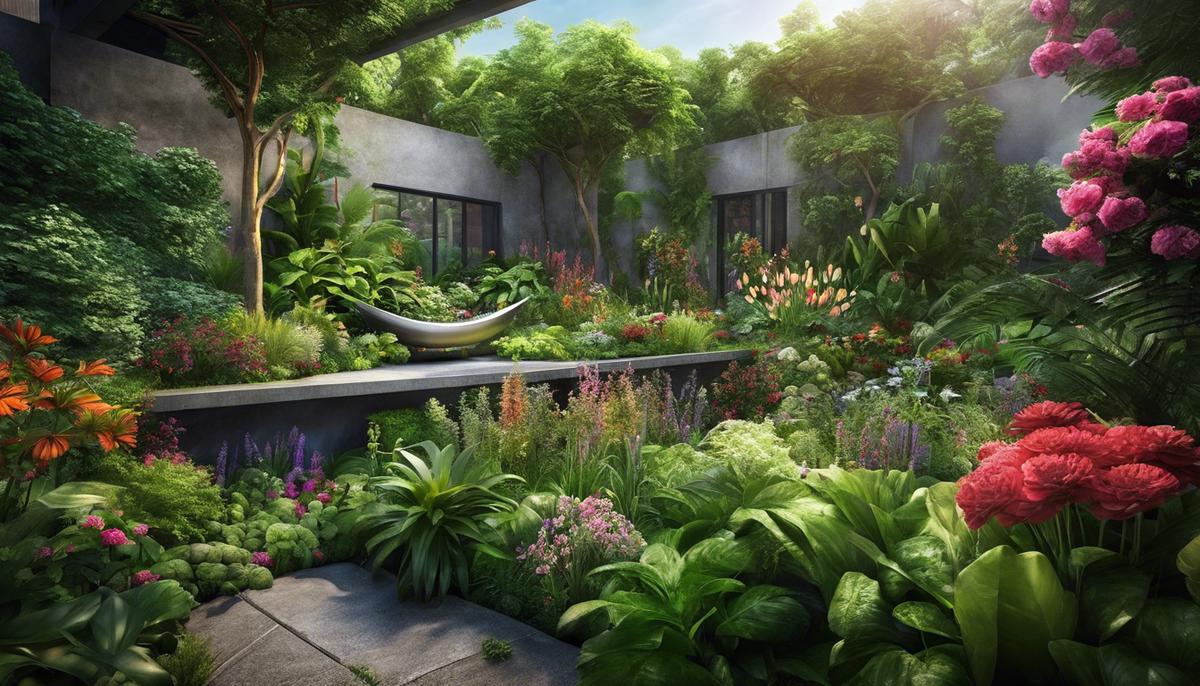
Benefits of Urban Gardening
Why Should You Start an Urban Garden?
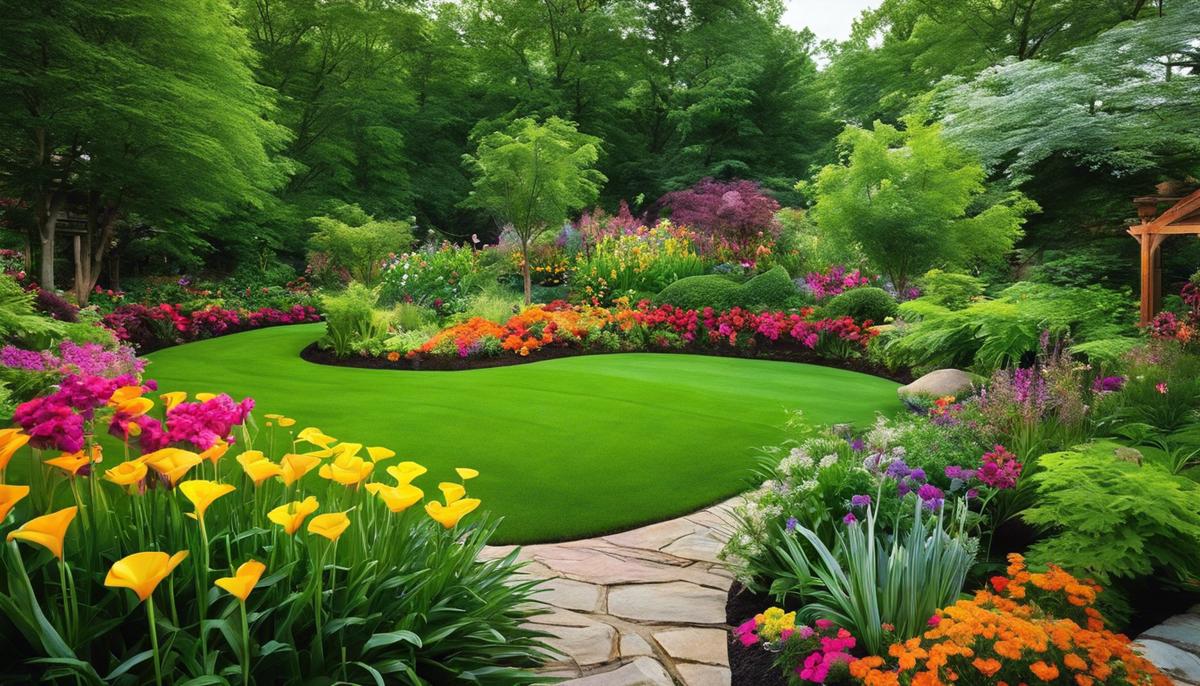
Challenges and Solutions in Urban Gardening
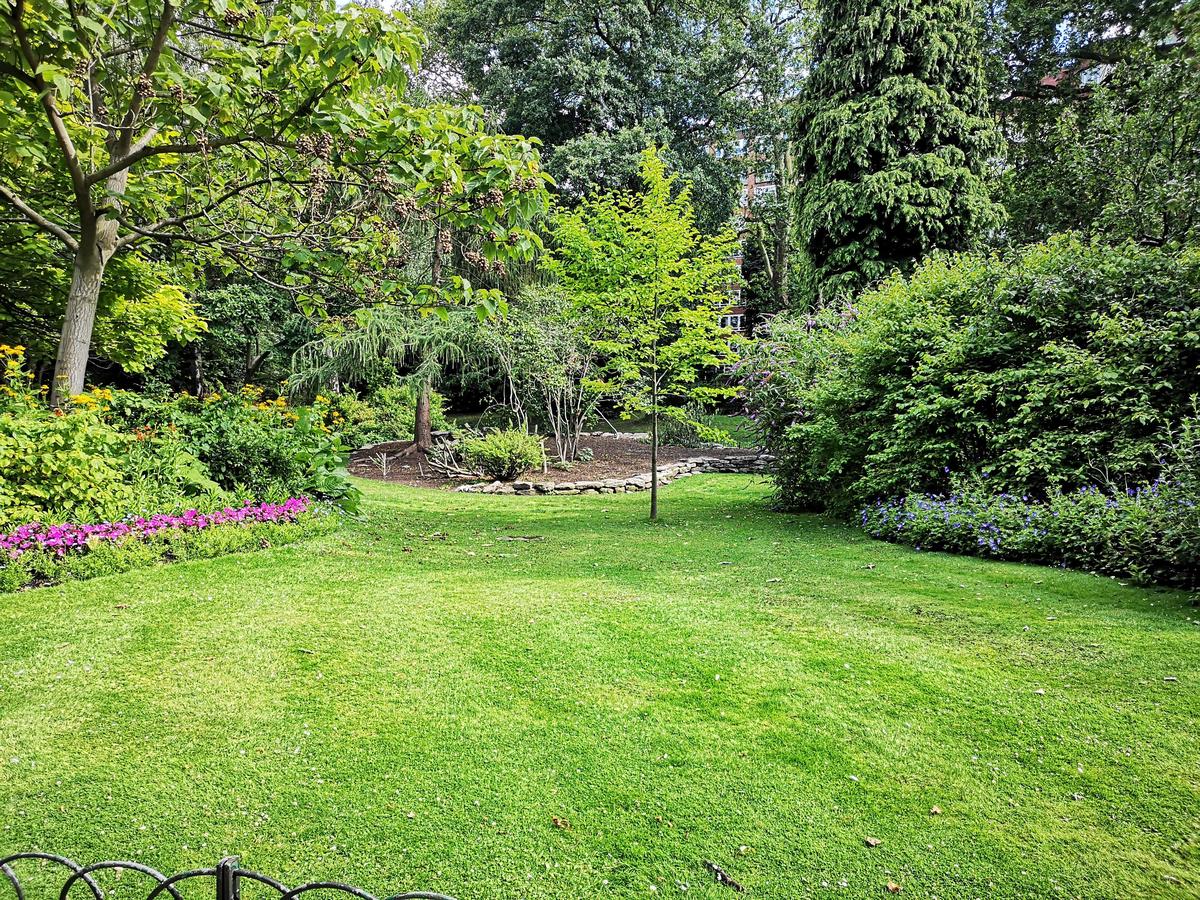
Getting Started with Urban Gardening
Diving into Urban Gardening: Cultivating Green Thumbs in the City
Switching focus to the practical elements
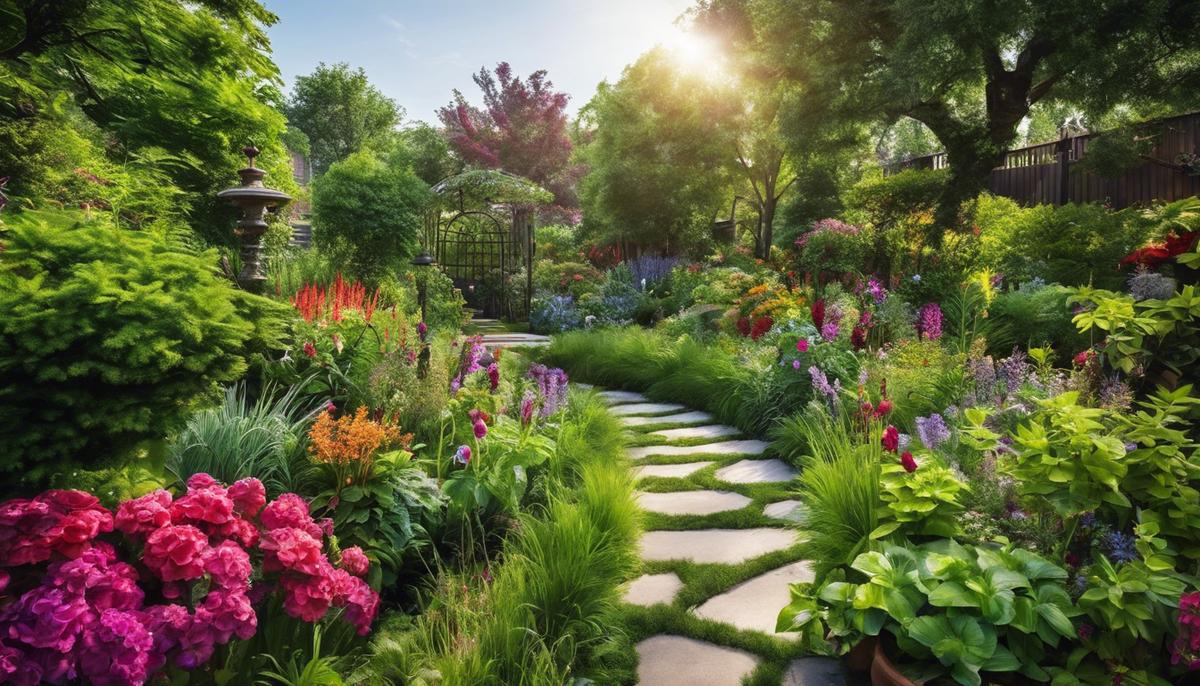
Urban gardening ideas
Choosing the right plants for urban gardening
The Best Plants for Your Urban Garden: A Comprehensive Review
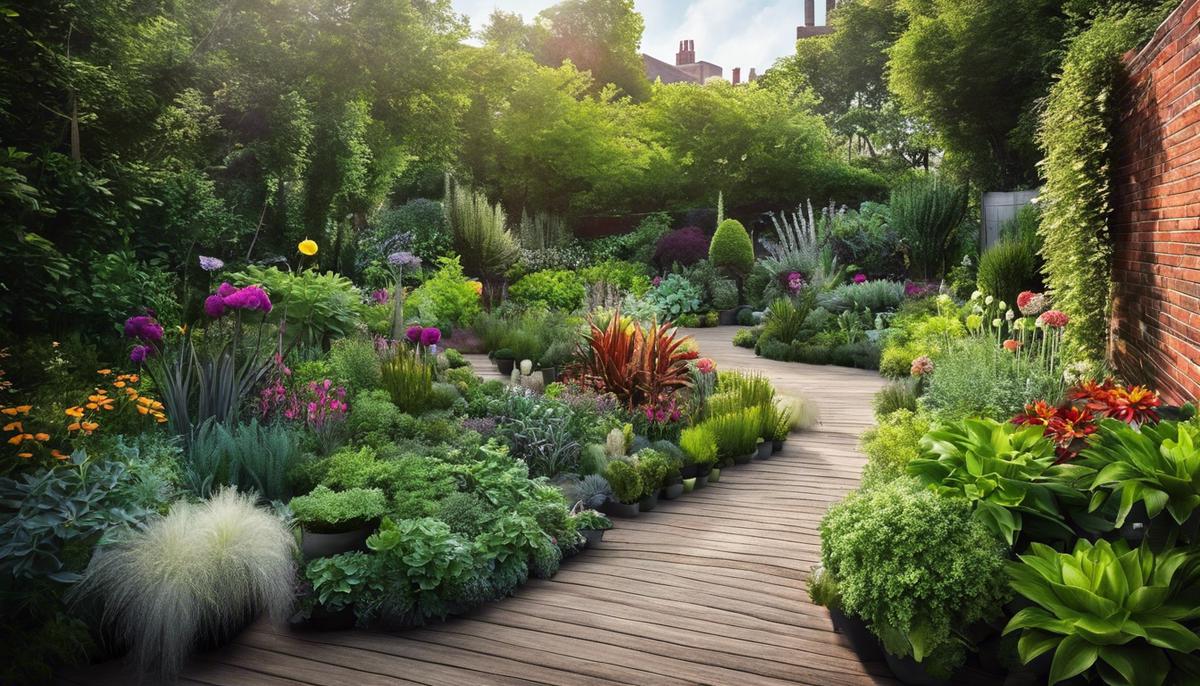
Maximizing small spaces for urban gardening
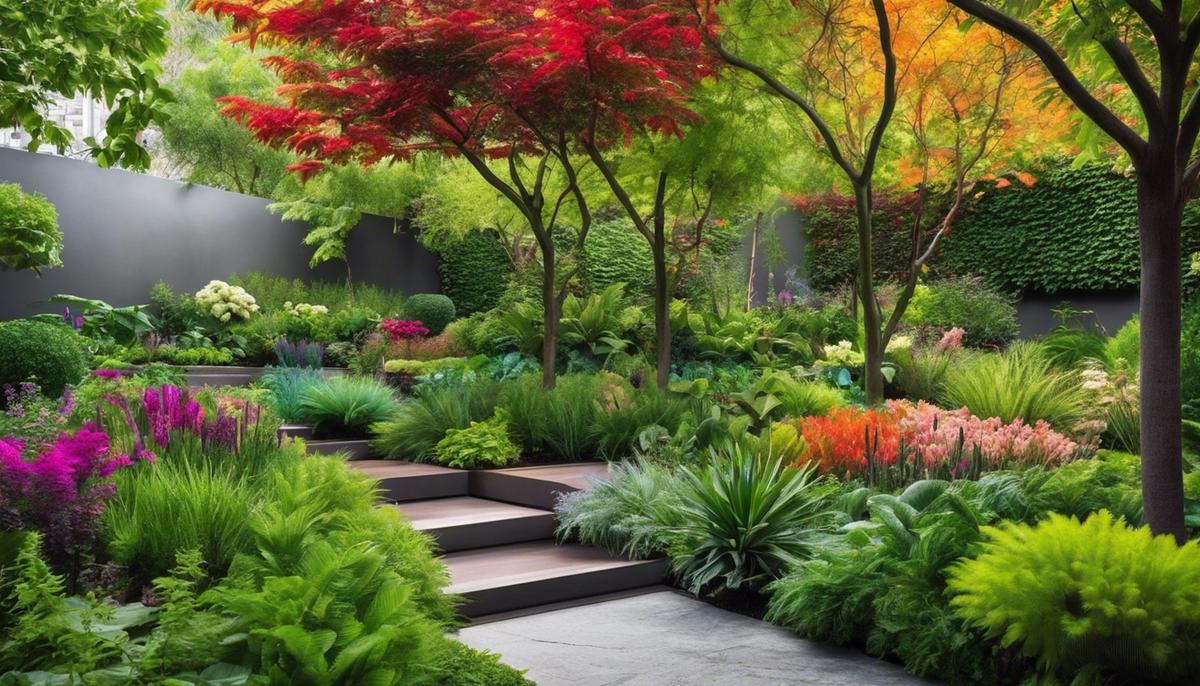
Dealing with common urban gardening challenges
Venturing into Urban Beastmode: Tackling Common challenges in Urban Gardening
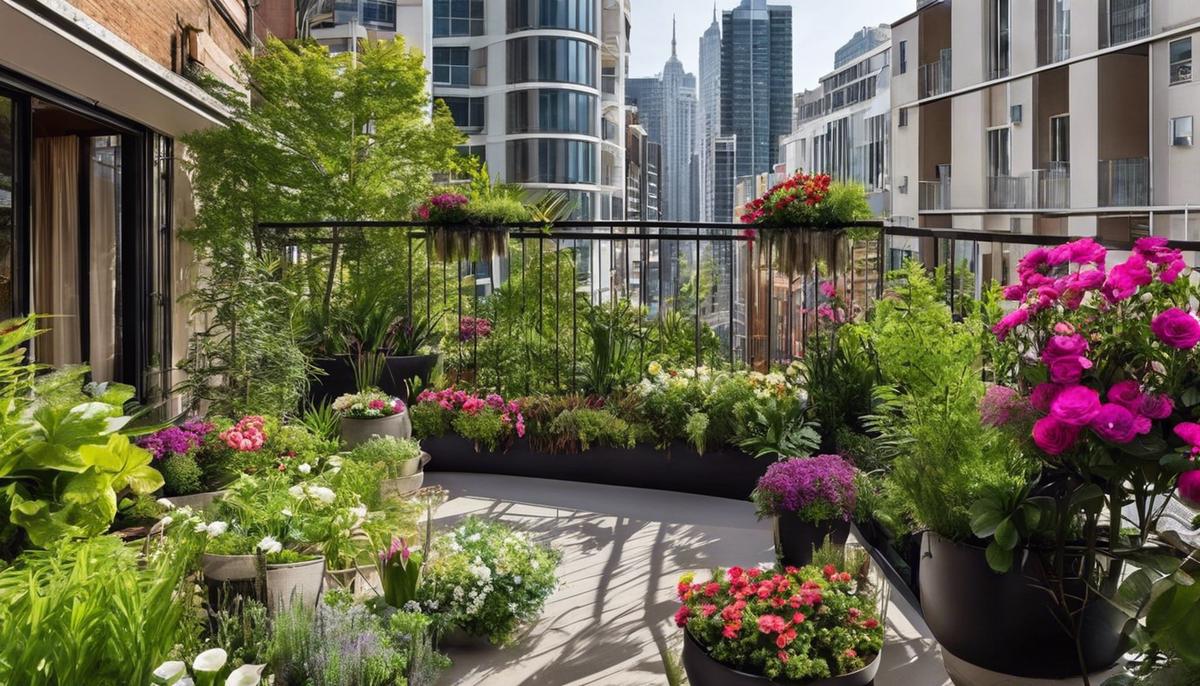
Incorporating sustainable practices in urban gardening
